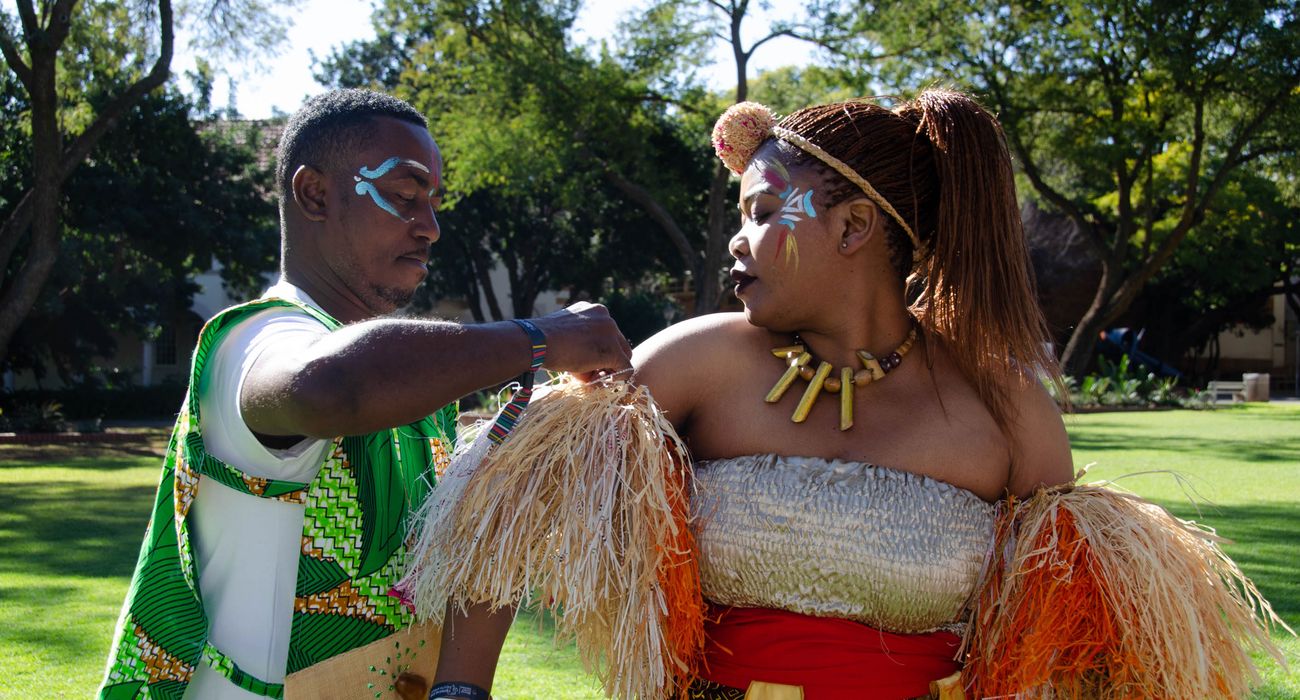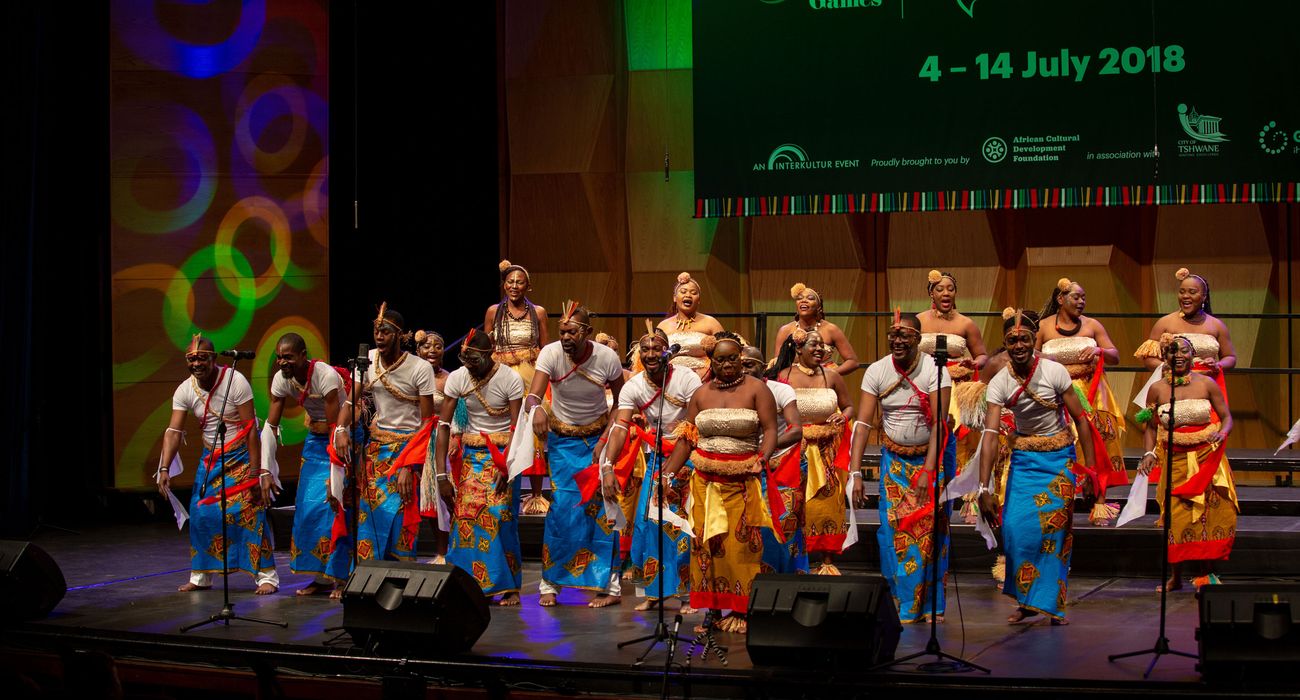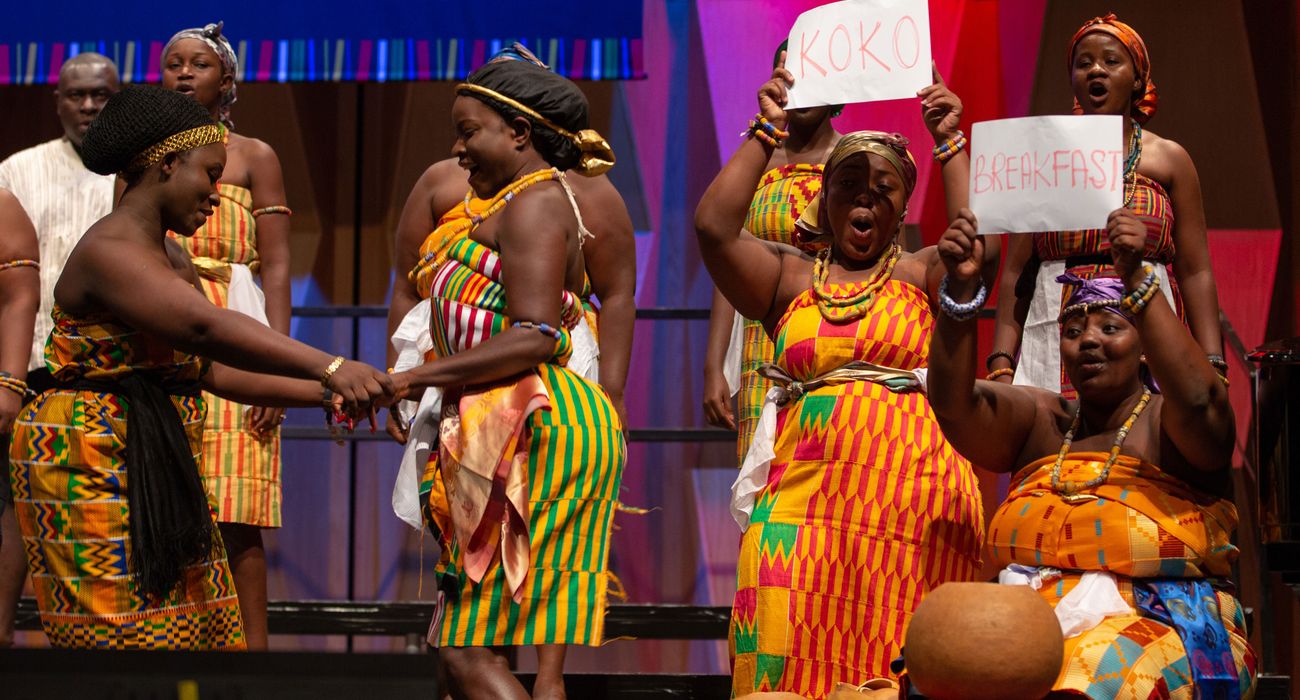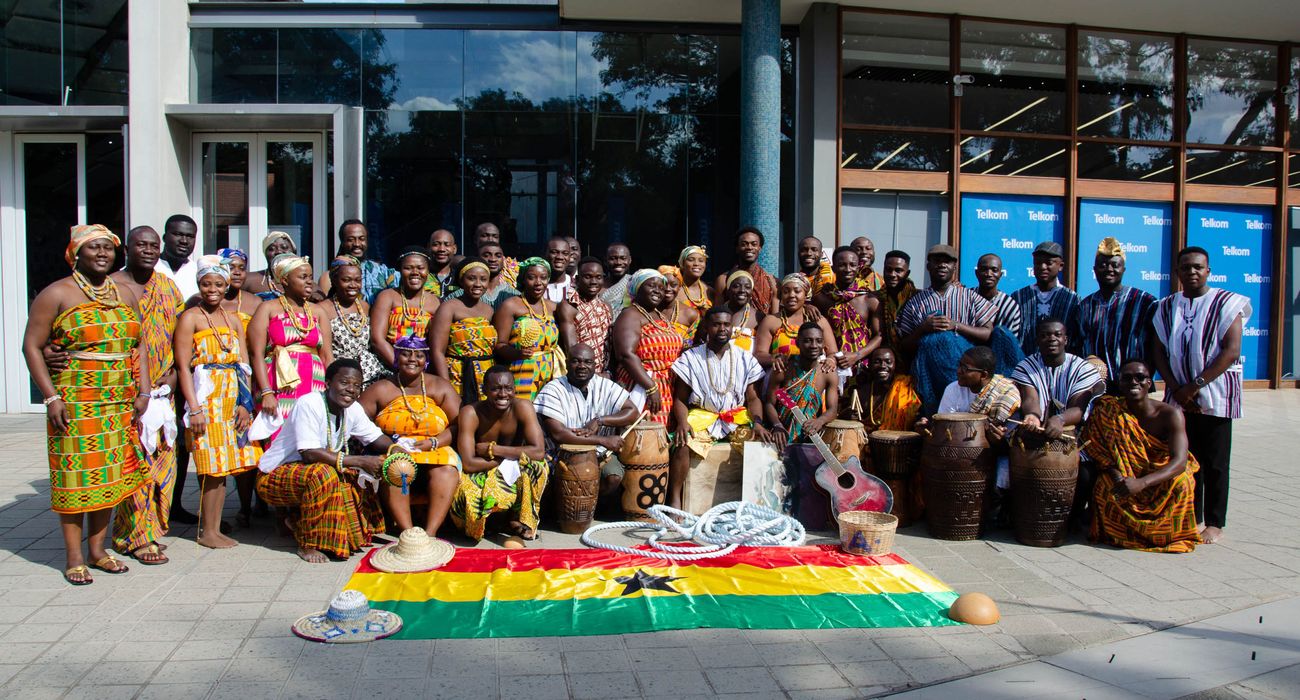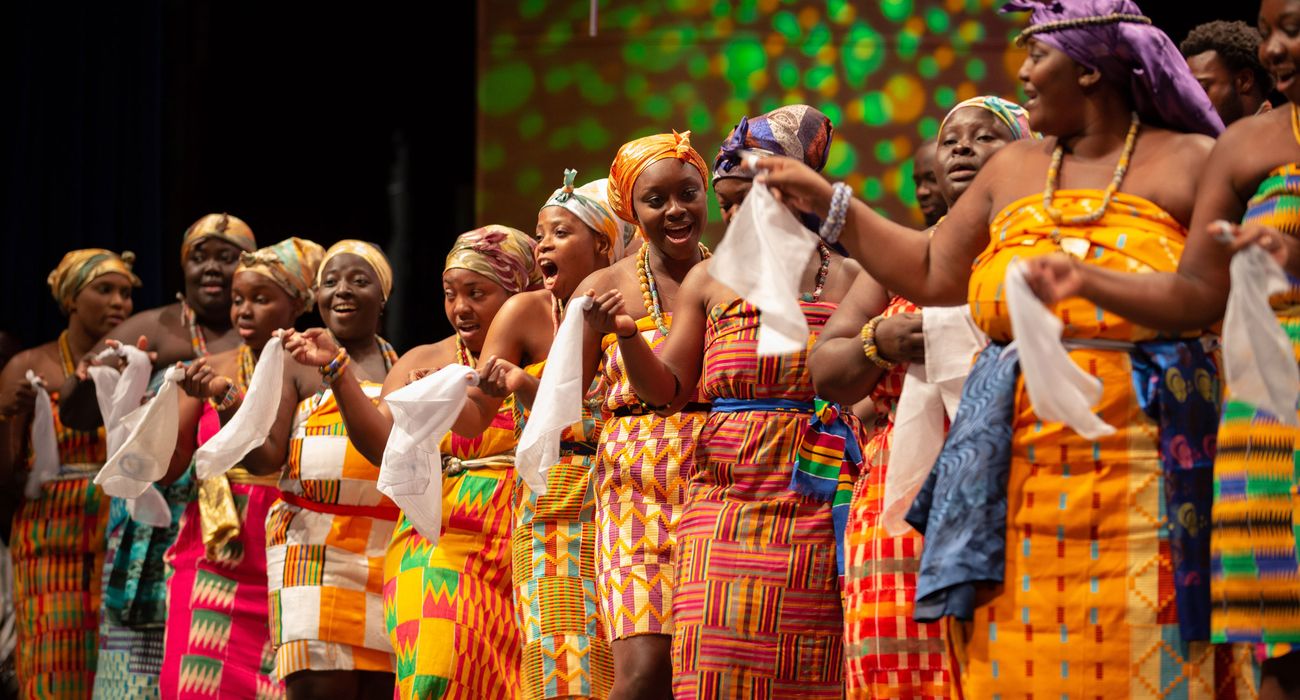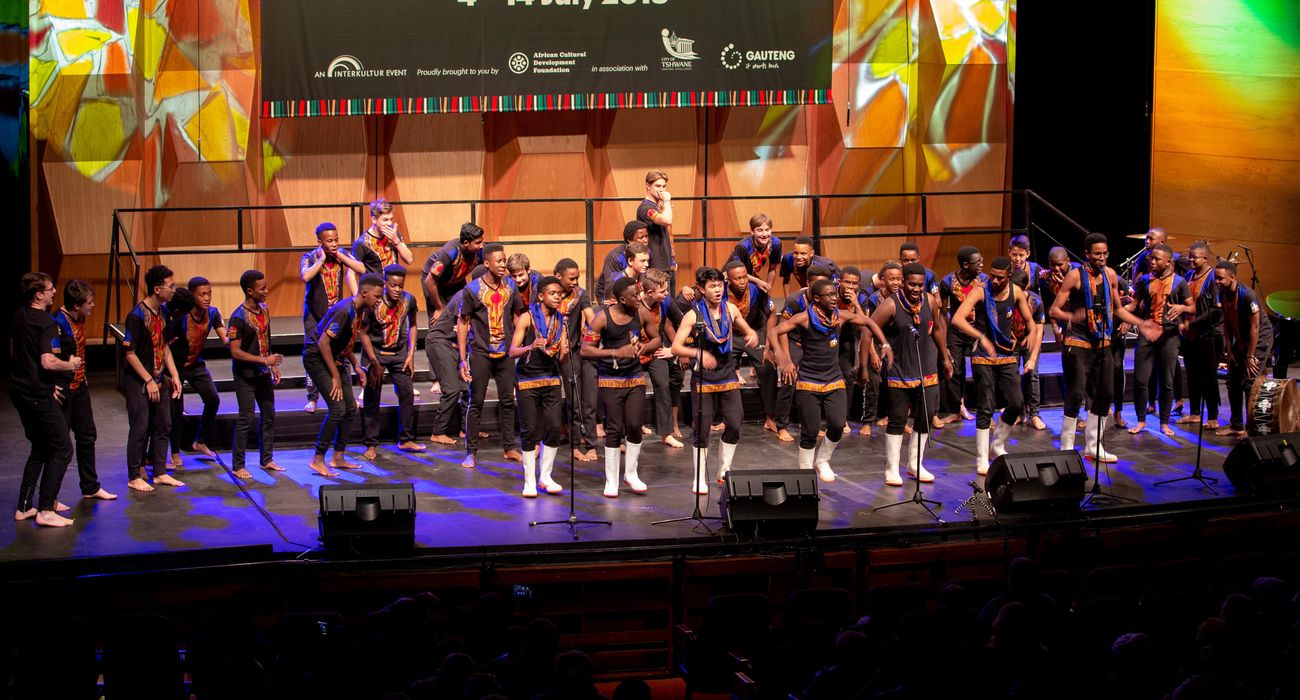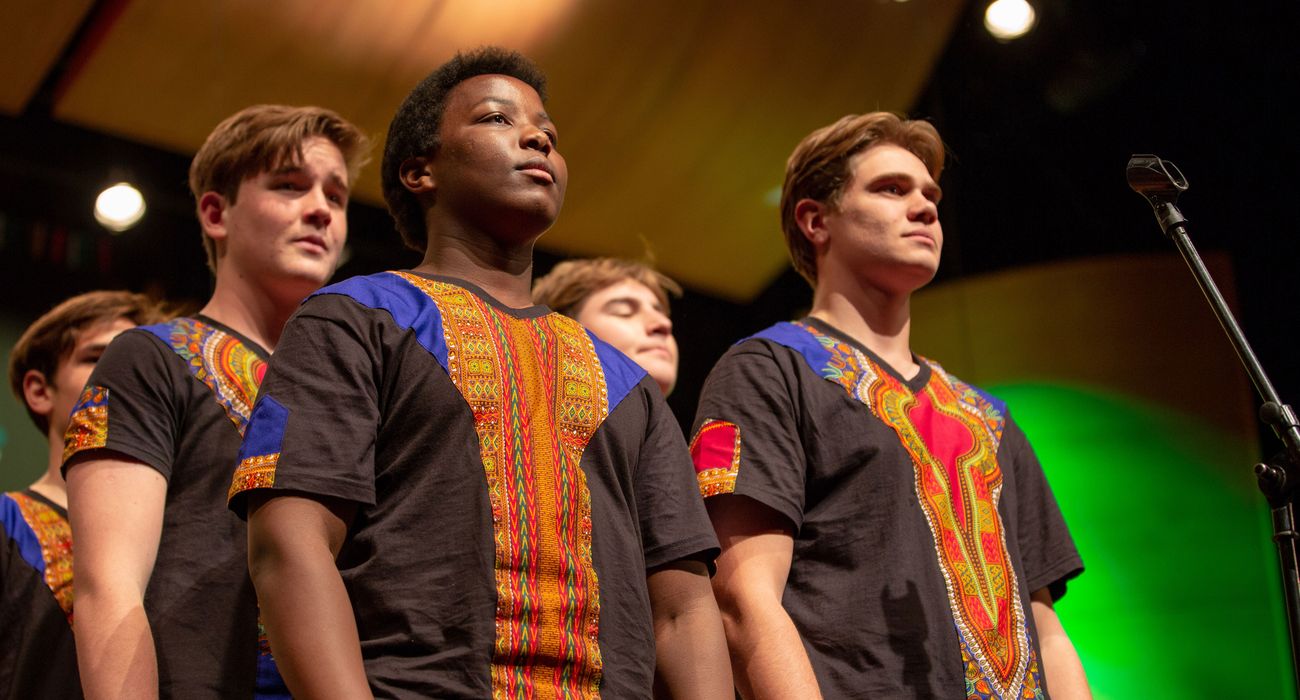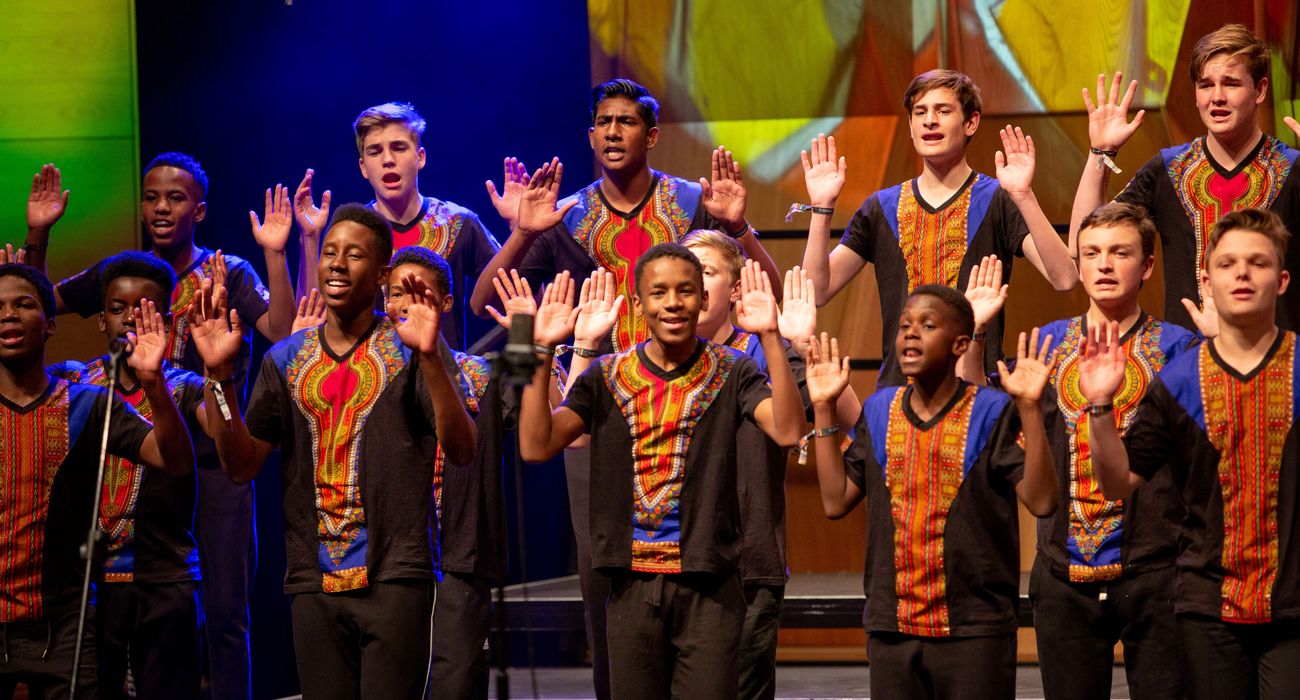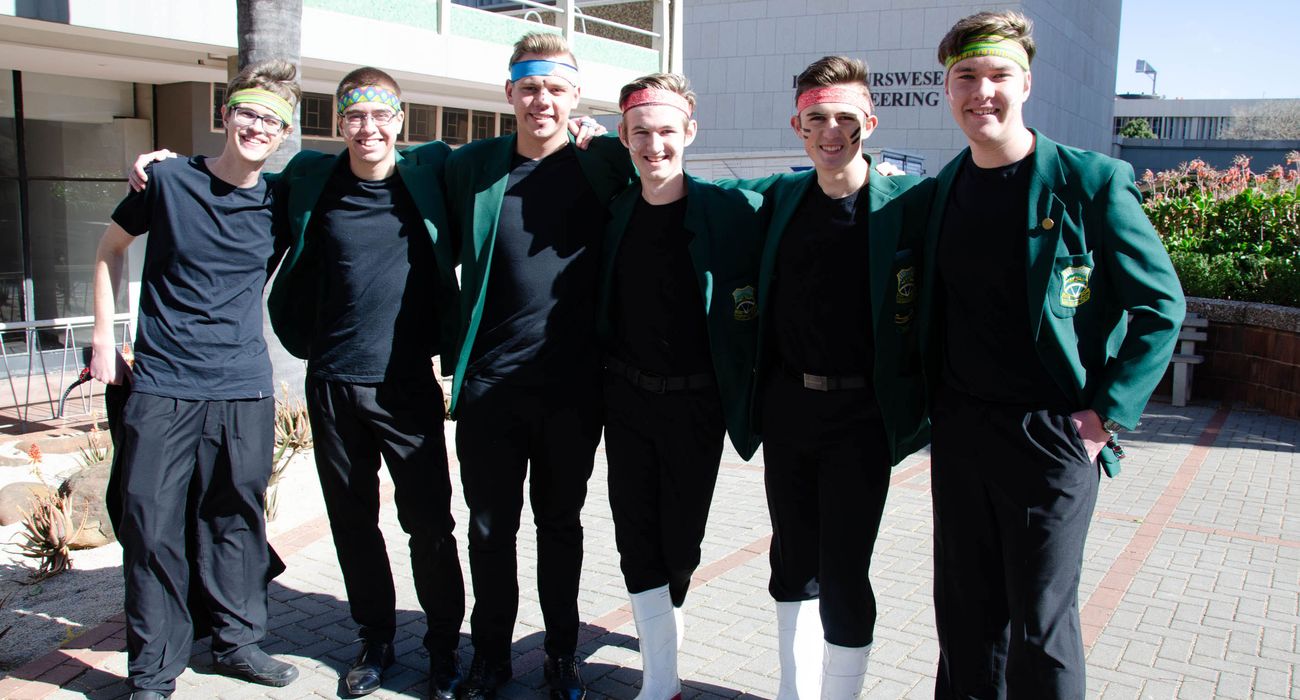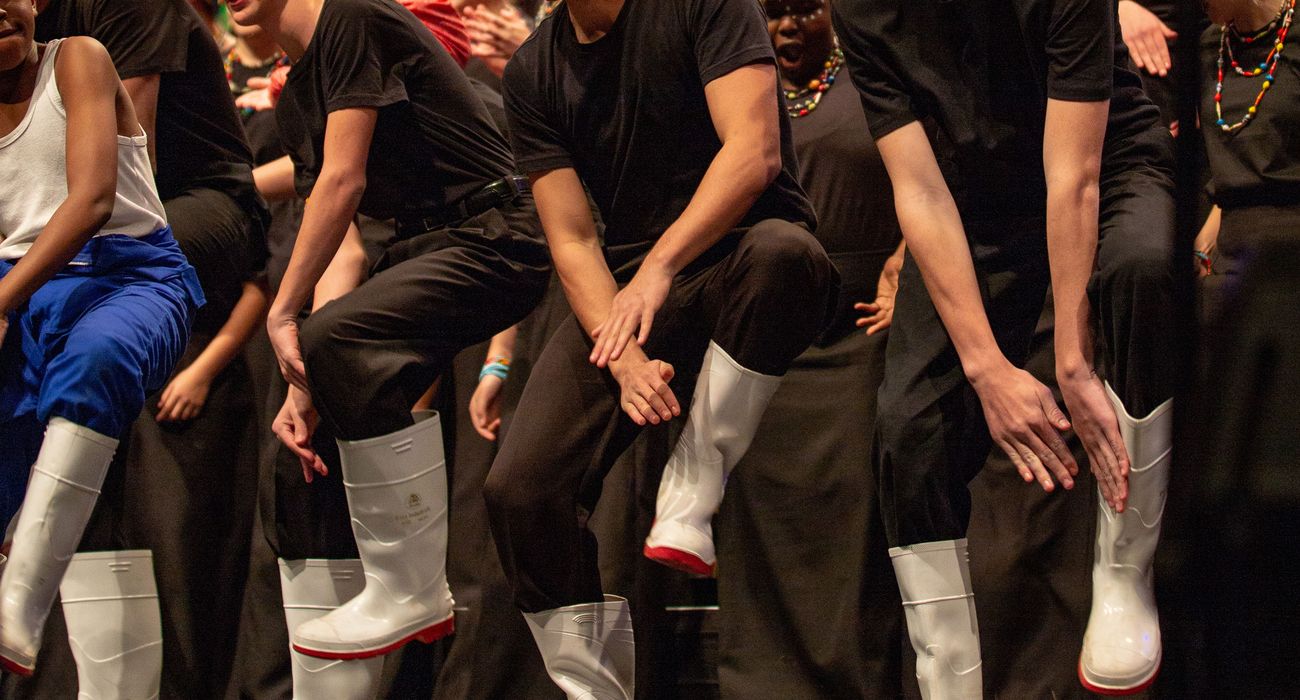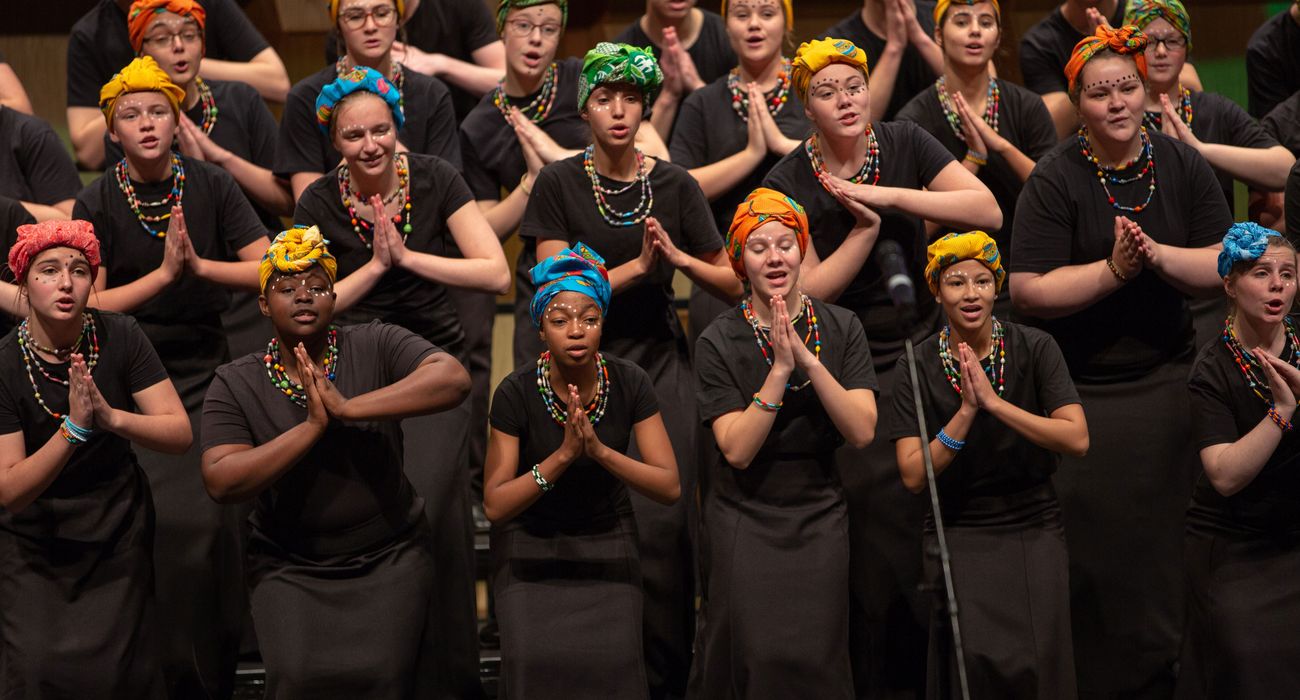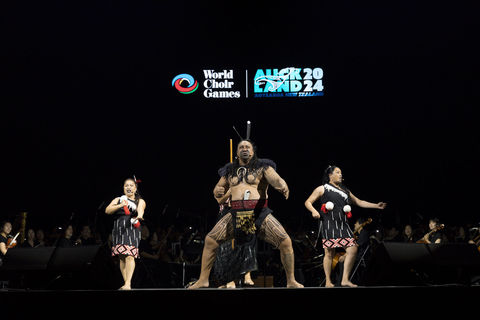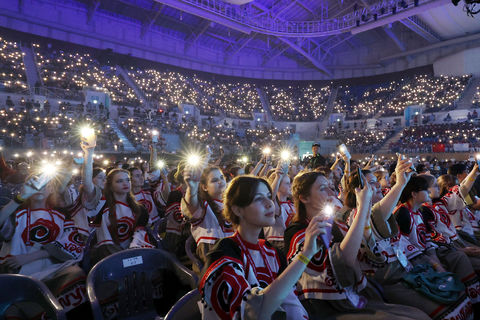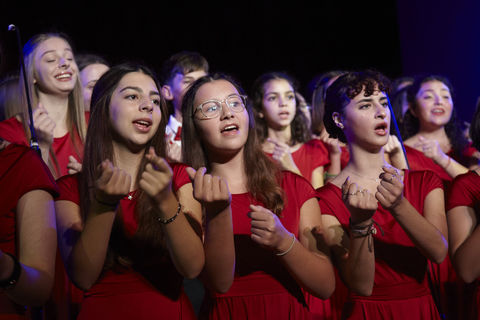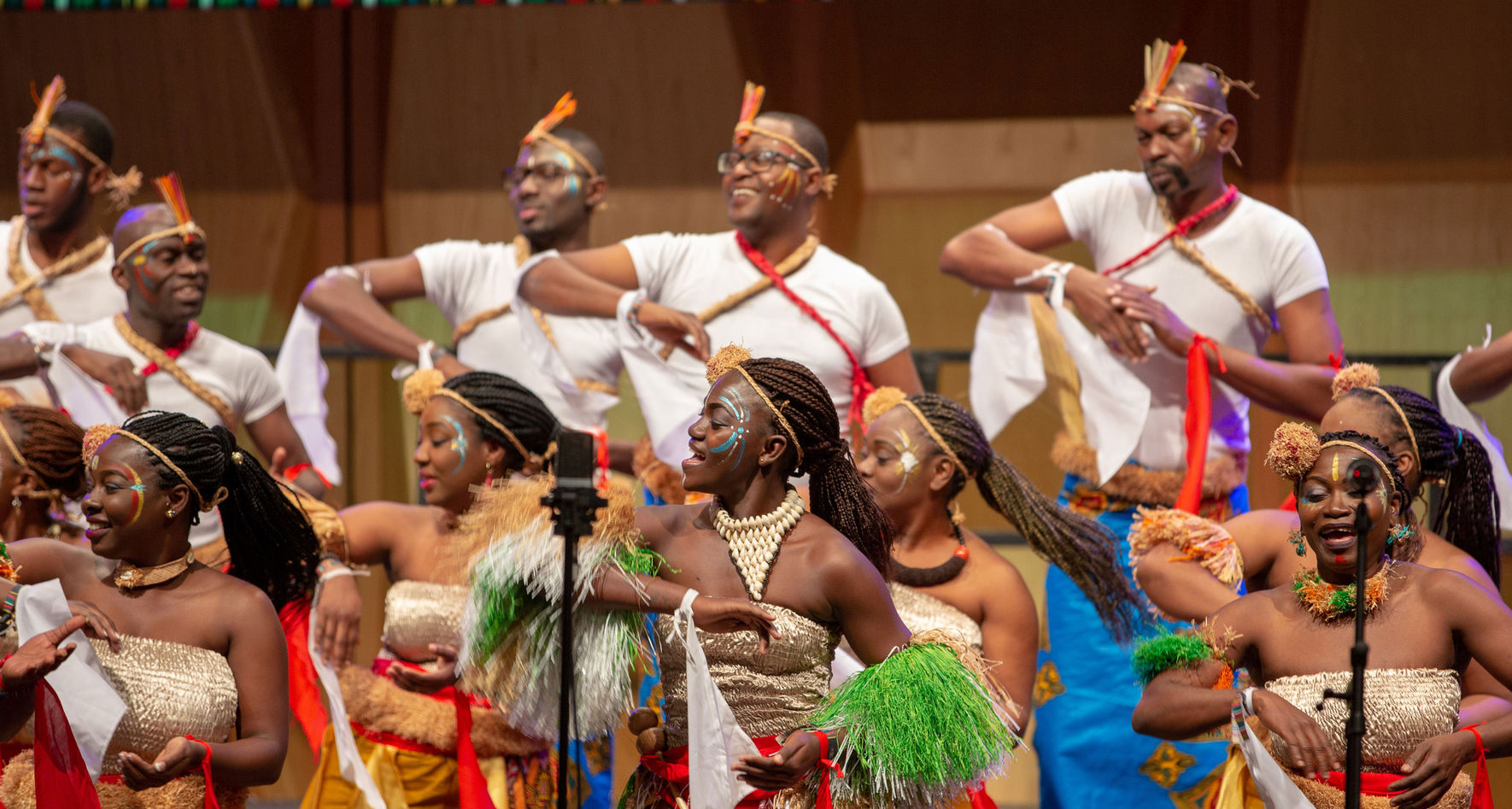
Scenic Folklore
Traditional costumes from all over Africa
Have you seen the Scenic Folklore category (O27) yesterday at the Aula of the University of Pretoria? Probably you wondered what the performances were about and what’s the cultural meaning of the costumes the choirs were wearing. We asked them for you!
Le Chant Sur La Lowe from Gabon was the first choir to go on stage. They wore traditional costumes inspired by the Gabonese culture. Probably you saw the fabric they were wearing on the waist, wrist or feet (so all the body parts that move a lot while dancing) – this fabric is called Raffia. You get it from the leaves of the Raffia palm, which is native to many regions in Africa. The choir performed songs about specific situations in life, such as a wise man giving advice to the younger generation and about a woman telling her baby not to cry.
The only choir from Ghana at this World Choir Games, Harmonious Chorale Ghana, chose costumes from two regions of Ghana: The Kente, a colourful, full-body fabric that can be worn in many different ways and the Smock, a more simple t-shirt-like clothing. The Kente is worn in the southern parts of the country, the Smock often in the northern part. Harmonious Chorale Ghana sang about fisherman on the sea, that come to the shore to get breakfast (called ‘Koko’ in Ghana) with their families and friends. In Ghana, it’s common that you eat all together and not separated from another, so it's a very important part of the cultural life.
From Ghana to South Africa: The Hilton College Choir chose a program that was put together from one of the boys of the choir. He and some of the other boys then taught the music to the choir members to keep it authentic. Their program consisted of selected music in some of the official languages (and herewith the cultures) of South Africa, e.g. Zulu, Xhosa, Afrikaans and in Shona (language and culture in Zimbabwe). They also included the traditional Gumboot dancing, which origins from the mine workers in South Africa. The shirts of the boys included the traditional South African ShweShwe fabric, which geometrical patterns and prints were in the past even painted on the walls of houses.
Wonberg Youth Choir, also from the host country South Africa, was the last choir to perform in the category O27 – Scenic Folklore. They performed an African medley “Mangisondele Nkosi Yam” which speaks from a typical day in the life of a South African. In the beginning it tells from waking up and thanking god for the new day, then about greeting the neighbors and the children, that start playing at the streets. Of course, it also includes the mine workers going to work and therefore the performance of the choir involved the tradition of Gumboot dancing.
You can see the costumes of the choirs below:

